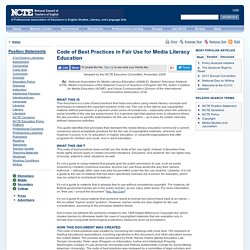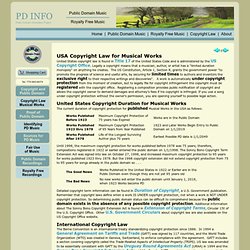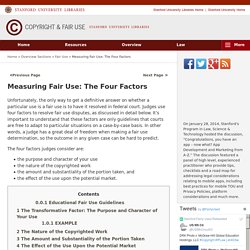

Code of Best Practices in Fair Use for Media Literacy Education. Adopted by the NCTE Executive Committee, November 2008 By: National Association for Media Literacy Education (NAMLE), Student Television Network (STN), Media Commission of the National Council of Teachers of English (NCTE), Action Coalition for Media Education (ACME), and Visual Communication Division of the International Communication Association (ICA) WHAT THIS ISThis document is a code of best practices that helps educators using media literacy concepts and techniques to interpret the copyright doctrine of fair use.

Copyright and Public Domain Music. United States copyright law is found in Title 17 of the United States Code and is administered by the US Copyright Office.

Legally a copyright means that a musician, author, or artist has a "limited duration monopoly" on anything he creates. The US Constitution, Article 1, Section 8, grants the government power "to promote the progress of science and useful arts, by securing for limited times to authors and inventors the exclusive right to their respective writings and discoveries". A work is automatically under copyright protection from the moment of creation, but to legally file for copyright infringement the copyright must be registered with the copyright office. Registering a composition provides public notification of copyright and allows the copyright owner to demand damages and attorney's fees if his copyright is infringed.
If you use a song under copyright protection without the owner's permission, you are opening yourself to possible legal action. Copyright & Fair Use - Measuring Fair Use: The Four Factors. Unfortunately, the only way to get a definitive answer on whether a particular use is a fair use is to have it resolved in federal court.

Judges use four factors to resolve fair use disputes, as discussed in detail below. It’s important to understand that these factors are only guidelines that courts are free to adapt to particular situations on a case‑by‑case basis. In other words, a judge has a great deal of freedom when making a fair use determination, so the outcome in any given case can be hard to predict. The four factors judges consider are: Open content licensing.